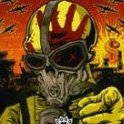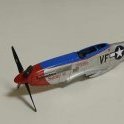Search the Community
Showing results for tags 'Special Hobby'.
-
Having recently built three supersonic hotrods of the Wisconsin Air National Guard I am finishing off my Wisconsin theme with a civilian bird, definitely subsonic: I am aware that Moa has posted a WIP for this kit, which he modified to represent Amelia Earheart's Model 10E. I'll be following his pathfinding in my build, although I'm sure mine won't compare with his excellent work. Here's what's in the box: two main sprues, some resin bits (cockpit details and engines), some clear plastic for the passenger windows, and a vacuform windscreen (mine is yellow with age). For the Wisconsin Central markings I will be using decals made by Pointerdog7. who thoughtfully included this short history of the Wisconsin Central Electra: I've not had much luck finding reference photos, and am looking for more. Here is one of the better ones: The Special Hobby kit does not include seating for the passenger compartment, so I'll have to do some scratchbuilding. I found this drawing, which should be a help. It even shows the toilet location! Also, I haven't yet decided whether to go with the kit's resin engines, or to use the much more detailed Small Stuff kit. If I use the aftermarket engines, I'll probably need to enlarge the nacelle cowlings to fit them in. So, that's my plan and I'm sticking to it (until I come up with a better one!)
-
Reggiane Re 2000 (SH48204) 1:48 Special Hobby The Re 2000 designed by Reggiane in the late 1930s was an all metal low wing monoplane fighter. It is said the designers took inspiration from the P-35. This was their first aircraft to feature an all metal stressed skin construction, previous aircraft being of mixed metal/wood construction. However like many aircraft of the period the control surfaces would remain fabric covered. The aircraft would also feature a fully retractable undercarriage. An early major problem was the lack of reliable engines, this would plague the aircraft in use as well. Armament was only two 12.7mm machine guns in upper fuselage. Wing guns were looked at but never adopted. The large sliding canopy offered excellent near all round visibility something lacking in other aircraft of the time. With a top speed of 330mph the aircraft was able to hold its own or better the C.200 and Bf 109E. Surprisingly the Regiia Aeronautica cancelled its pre-production order and rejected the aircraft so it was promoted overseas. In face the British Govt were interested in purchasing it , initially directly, and then via the companies Portuguese subsidiary. Efforts on this came to a halt when Italy entered WWII. in the end 80% of production would go to Sweden with 60 aircraft, and Hungary with 70 aircraft. The remainder would serve with the Italian Air Force over the Med as escort and attack aircraft. 12 Re 2000A long range aircraft were built with an increased fuel capacity and a small number were rebuilt as catapult launched aircraft for the Italian Navy. The Kit This is a new tool kit from Special Hobby this year (with the wing sprue having its origins in the Classic Airframes kit of the past. As a new tool kit the quality is good with nice recessed panel lines, good detail and good clear parts. There are 4 sprues of grey plastic and the clear sprue. Construction first begins in the cockpit which builds up to a complete module that slots into the fuselage when built up. The rear frame has the seat and its supports added before being joined to the floor. At the front the bulkhead there is built up with the instrument panel being added at the top, and the rudder pedal at the bottom. This ten attached to the floor. The two side panels have various details added and then they attach to make a complete module. Into this a fire extinguisher and the control column are placed. Following this the retractable tail wheel and its housing are completed These two sub assemblies can now be placed into the fuselage and it can be buttoned up. Work now switches to the wings. There is a one part lower and left/right uppers. Attachment points for the main gear are added into the lower wing, these can then be assembled and added to the fuselage. The main gear units and their covers can then be built up and added in. The engine with its double bank to cylinders can be assembled and added to the front of the model. The 3 part cowling is then made up and added along with the intake and exhaust parts. To finish off at the rear the tail planes are added. and at the front the prop is built up and added. The pilots head rest is assembled and added along with the canopies. Lastly the nav lights and pitot probe are added on. Markings The glossy decal sheet is printed in house and looks sharp and in register. There are marking for three Italian Aircraft in the Sand/green/brown over blue grey scheme. MM.5069 Experimental section, 74a Sqn, 23 Gruppo, Scilly 1941 MM.5068 Experimental Centre, Guidonia, 1941 MM. Unknown Experimental section, 74a Sqn, 23 Gruppo, Scilly 194Z Conclusion It is good to see a new kit of this lesser known fighter out there. Recommended. Review sample courtesy of
-
Reggiane Re.2005 Update Sets (for Special Hobby) 1:48 CMK by Special Hobby Special Hobby’s new 2020 release of what many consider the pinnacle of WWII Italian fighter design is a good-looking kit, but here comes a bunch of resin to make it even better. All the sets are from CMK’s Quick & Easy line in green header packs stapled together in a little bag and brief instructions that due to their simple nature are little more than diagrams of where to cut the resin away from the parts. All the set are drop-in replacements for the kit parts to improve detail with as little effort as practical, and once they are removed from their casting blocks they just slot right in there after a brief wash in warm (not hot) soapy water. Furthermore, removal of the parts is made easier thanks to the clever design of the casting blocks that minimise the contact points with the parts. Main Wheels (Q48344) Two wheels moulded on separate casting blocks that attach to the parts on the flat-spot where the wheels simulate the weight of the airframe with bulged sidewalls and flattened tread that is sensibly under-stated. Once cut from their blocks and flattened they are attached to the gear legs and doors with smooth surfaces and no annoying seams to hide. Detail of course excellent, with fine circumferential ribs and lightening holes/vents around the edge of the hub. Tailwheel with Strengthened Leg (Q48365) This set has four parts, three of which are in a stronger black resin that makes up the leg, riveted brace and the yoke that holds the wheel in place, which is moulded in the usual grey resin. This assembly is then trapped inside the kit bay parts as illustrated in the instructions (step 7 in the kit), for your ease. Supercharger Intake (Q48366) The intake that leads to the supercharger mechanism is reminiscent of the one seen on the Bf.109 and others, having a longer intake, with a fine lip and deep intake giving a very realistic look to the part. It requires just one cut to remove the casting block and fits into the socket on the side of the fuselage. Exhausts (Q48367) This set has four parts, two of which are the slots and heat deflectors around the exhausts, into which the beautifully crisp hollow 5-stub exhausts are fitted, with the two subassemblies fitted into the sides of the nose once complete. The lips of the exhausts are fine and deep enough to accept a black spot-wash once painted to give the impression of even greater depth. Conclusion A fine set of incremental detail improvements for this new kit that will improve the look immensely in whatever combination you choose, with small prices for each set. Highly recommended. Review sample courtesy of
-
After finishing one he the biggest if not the biggest model I'll ever do comes the smallest, Special Hobby's 1/48 XF-85 Goblin. Your typical limited run kit. A mixture of resin and plastic(with a lot of flash and I don't mean snazzy) So let's begin shall we?
- 8 replies
-
- 9
-

-
- Special Hobby
- 1/48
-
(and 1 more)
Tagged with:
-
Finish no8 for the year is the Special Hobby AH1G Cobra with M35 Cannon in 1/72 scale. First Special Hobby kit I've done and very impressed, no filler, minimal sanding, fine panel and rivet detail, canopy which fitted even though it was 5 parts, multiple weapon options and nice decals. First helicopter since returning to modelling but I thinks they'll be more to come, Dream Model's AH1Z looks nice. I went for a well used aircraft with a dusty appearance and based the rocket and gun pods on photo of Vietnamese based Cobra's. Built OOB painted with Tamiya acrylics and weathered with MIG Ammo powders. As usual all comment welcome.
-
Here we go, probably the smallest aircraft I'll ever build in 1/48 Special Hobby's XF-85 Goblin. Mostly OOB, but like all Special Hobby kits you have to do a certain amount of fabricating. The exception was printing out new wheels for the cart, they were too fat. Exterior was clad in Bare Metal Foil weathered using a mechanical pencil. Here is the link for the build, small as it is. no pun intended😎 All things considered it was a fun, if quick build. Thanks for stopiing by and if you have any questions, comments, r suggestions, please feel free to shout them out. Until next time...
-
- 10
-

-
- 1/48
- Special Hobby
-
(and 1 more)
Tagged with:
-
Pz.38(t) Ausf.E/F Engine (3142) 1:35 CMK by Special Hobby This set is patterned for the 2019 Tamiya kit, and is designed to detail the entire engine bay with a few small adjustments to the base kit that involves some removal of plastic, which is shown in the first step of the instructions, and when the rear bulkhead needs a hole cutting in it. The set arrives in a small yellow cardboard box with a number of pictures of the set built up within the Tamiya kit, which shows off the detail to great effect. Inside is a bag of parts split into four heat-sealed sections to protect the parts from damage during transit. The part count is high, as is the detail that is present on the parts, and the way in which they go together, with every detail shown in the 3D isometric instructions. Construction begins with the main engine block, then the bay is detailed within the confines of the kit parts, after which the engine is inserted and surrounded by the radiator with its surround and cooling fan. Various ancillary parts are inserted into the remaining space, and hoses join the areas together while the exhaust takes away all the gases. The main space complete, with the instructions giving you helpful colour callouts along the way, it is time to install the inspection hatches, top grille and the rear armoured panel that encloses the radiator fan, removing small parts of the kit as you go. Propping the hatches open will allow the viewer to see the detail from the sides, with finishing plates added to the undersides of the kit hatch parts. Conclusion It’s a hugely detailed set and will look great when painted and fitted into the kit. Highly recommended. Review sample courtesy of
-
- CMK
- Special Hobby
-
(and 1 more)
Tagged with:
-
Hello all! The latest build just rolled out of the paint shop in the form of one of my favourite 1950s/60s jets, the Dassault Super Mystere B2. As you can see, she is one of the conversions undertaken by our Middle Eastern neighbours, Israel. After the Israelis had retired these machines the Fuerza Aerea Hondurena (Honduran Air Force), the “FAH”, received 16 of these machines during 1976-77 as part of deal covering 16 aircraft, parts and engines. Once in country they were allocated serials in the range FAH 2001 to FAH 2016 and were operated from La Ceiba air base. Their initial operation was supported by the Israelis but quickly the Hondurans grasped the nettle and took on the operation completely. They saw action in the Nicaragua-Honduras conflict against the contras - Operación Danto ‘88 - https://translate.google.com/translate?hl=en&sl=es&u=https://es.wikipedia.org/wiki/Operaci%C3%B3n_Danto_88&prev=search&pto=aue - and latterly were used on border patrol work, often intercepting drug running aircraft overflying the country. During their service, which was long, four aircraft were lost in accidents. During the mid-1980s they underwent maintenance in Texas, USA and thereafter they adopted the light blue and grey colour scheme that they carried until the end of their days. At the end most were placed in open storage but two survive as preserved machines in Honduras, one (FAH 2016) is in the Museo del Aire (Air Force Museum) in Tegucigalpa while the second (FAH 2003) is still at La Ceiba. Both have lost their genuine FAH colours. This particular machine is FAH 2002 and she is modelled to represent her early in her FAH career. The main difference over time was the addition of new and differing antennae on the fin. She is, as you can see, marked in the standard US camouflage of the day. The weapons fit is based on the following image: This consisted of two Shafrirs and two LAU-68 rocket pods, plus the integral DEFA cannons. You can see in some images, though, that they also carried bombs (Israeli and Mk82) and even the Israeli MER. However,Alex @sosa_1991 whose father was a pilot and instructor on these aircraft, has told me that they never used the MERs operationally. From the following photo you can see, though, this machine did, at least, carry them at least once albeit with practice rounds. In fact, an image exists showing this same aircraft at an air show with 4 x MERs fully loaded with bombs! The SMB could carry a large payload but I reckon this might have pushed her limits if it had been tried in the air! These are my two reference images: Alex has been very supportive of this build, guiding me with information from his father and with images. In return my first FAH Super Mystere build (an Azur) was shipped, via Miami, to Alex in Honduras where she now sits as part of his father’s air force memorabilia display. Thanks for all your help, Alex! 😊 This model is built using the Special Hobby kit (72345) as a base. A great, very detailed kit. My only criticism in its production is the slight mismatch in moulding that has resulted in many edges that need to be sanded and cleaned up. In engineering terms it would have benefited from having a different arrangement for the tail empennage. As a result, I had to butcher it a bit to get the drooped “hydraulics off” tailplane. Being more pedantic it would have been good to have separate speed brakes as these Israeli machines always had the brakes extended while on the ground – mandated. That aside she is a beauty! What did I do/use? Well: 1. Kit – Special Hobby Dassault Super Mystere B2 “Sa’ar” 1/72 (Kit No. 72345) 2. Aftermarket/extras – The Shafrirs came from the Brassin set (672 217). The LAU-68 D/As came from the Special Hobby AH-1Q kit and the Speedbrakes are partly from the Eduard PE set (73 683). See my WIP for more on this. The seat is Aires and as close as I could find in the aftermarket. 3. Decals – I am grateful, as always for the drawing expertise of @Giorgio N who drew up these decals as well as a full set for the remaining fleet plus the entire FAH Sabre 4 fleet. We then got these printed by Arctic Decals by suggestion from @Moa, to who I also extend my thanks. In addition I used kit stencils and some White stencils from the Microscale camouflaged F-4 set. 4. Paints – As I do often, I used the excellent Colourcoats on this build. However, having expended one tin of FS2622 I discovered that the next was a different shade of grey. For decalling and weathering protection I used Humbrol Glosscote. The model finished in Humbrol Mattcote. 5. Washes and Weathering – Flory dark dirt wash plus Tamiya Weathering Powders and a Prismacolor Silver pencil. I hope you like her. I do, although I lost my enthusiasm for a while! Martin
- 21 replies
-
- 56
-

-

-
- Honduras
- Special Hobby
-
(and 1 more)
Tagged with:
-
Seems I've done nothing but jets for a while with the Warthog, Harrier and TSR 2 so I decided to make one of the kits I was fortunate to receive for being another year older. I haven't done a rotary wings since coming back to modelling and after seeing Alain P's excellent Cobra during the Sharkmouth BG I decided on that kit. So the kit, it looks very nice and well made. Decals nicely printed and of course tiny stencils to apply. I will be doing either scheme A Thors Hammer or B Cindy Ann.
-
Two JU87As were sold to the Japanese for evaluation. This is pretty much an out of box build of the Special hobby, but with a scratchbuilt canopy because I managed to wreck the kit one and lots of scratchbuilt bits and pieces because I lost most of the small resin parts .
- 3 replies
-
- 18
-

-
- 1/48
- special hobby
-
(and 1 more)
Tagged with:
-
Hello Here is my 1/72 Special Hobby SNCASO Vautour IIN from the ECTT 01/030 Loire in 1961 on Creil Air Base. This an old kit but easy to build except around the engine cowlings. Patrick
-
Fouga CM.170 Magister "French, Belgian & Irish Service" 1:72 Special Hobby (72371) The Magister is probably Fouga's most well know design even though they had been producing aircraft since 1936. Post war the company was working on sailplanes and the heritage from this can be seen in the Magister design. In 1948 the French Air Force were looking for a jet powered aircraft to replace the then piston engine trainers. Fouga's original design the CM130 was underpowered with two Turbomeca Palas engines. Fouga then re-designed their aircraft to incorporate the more powerful Marbore engines, et voilà the CM170 Magister. The distinctive V tail, and slender wings bear testament to Fouga's sailplane designs. The prototype Magister flew in 1952 with an order for the first 10 being placed in 1953. The Magister was the worlds purpose designed/built jet powered trainer. It is also worthy to note the Magister made it into carrier aviation. With a few changes to the structure and undercarriage, the addition of an arrestor hook, and sliding canopies the CM175 Zephyr was born. Interestingly carrier trials took place on HMS Bulwark and HMS Eagle. The French aircraft industry in parallel with the UK went through many mergers with the aircraft being known as the Fouga Magister, Potez Magister, Sud Aviation Magister; and finally The Aerospatile Magister; though always actually being called The "Fouga" Magister. Development of the aircraft continued right up until the French selected its replacement, the Alpha Jet. Overseas sales proved popular were made to primarily to Germany, Belgium, Finland, and Israel; with Germany, Finland & Israel building them under licence. Of a total of 929 aircraft built, 286 were built under license. The basic jet was very affordable to operate for smaller Air Forces. Other users would include, Algeria, Austria, Bangladesh, Biafra, Brazil, Cambodia, Cameroon, El Salvador, Gabon, Katanga, Lebanon, Libya, Morocco, Nicaragua, Rwanda, Senegal, and Uganda. Many counties including Austria, Belgium, Brazil, France, Germany, Ireland, Finland; and Israel would use the aircraft for their National Aerobatic display teams. Even though primarily a trainer many of these smaller nations would use the aircraft for its light strike capacity as well. Israel would use them in combat during the 6 day war, El Salvador saw them used during its civil war, and aircraft used by The Katangese Air Force were used against the UN during the Congo crisis in 1961. The Kit The kit arrives on four sprues of grey plastic, and a clear sprue,. The plastic parts are of excellent quality, the panel lines are engraved and deep enough to be seen after painting without being trenches. Care will be needed to take some of the smaller parts of the sprue, and it might have been the case that these would have been better in photo-etch? The clear parts are crisp, clear and thin. The resin parts are for the under-fuselage antenna fitted to the Algerian and Moroccan examples. Some of the smaller parts will need careful removal to avoid damage. Construction starts in the cockpit area. The front and rear instrument panels are fitted (instrument faces are provided as decals), along with the seat supports for the front cockpit. The seats are added along with the engine and flight controls. Once complete the cockpit can be set aside. Attention then moves to the engine pods on each side of the fuselage. Engine fan faces and exhaust need to be placed inside and then the inner side of the engine trunking can be added. At the rear of each side the final exhaust section is added. Once the engines are complete then cockpit can be placed inside the main fuselage, and this then closed up. The radio equipment area to the rear of the cockpit is also added at this time. Various antenna behind the cockpits then need to be added and/or removed depending upon the version being modelled. Once the main fuselage is together work needs doing on both ends. At the rear the tail cone is added along with ventral strake. The 'V' tails are then added, care being taken with the small hinges for these. At the front the first part to me made up is the underside of the nose where the nose gear mounts. This attached inside the nose cone and the appropriate gun/no gun insert is attached to the top of the nose. The prominent nose mounted VOR antenna loops are added and the nose attached to the main fuselage. Construction then moves to the wings. These are of conventional upper & lower construction. The wheel wells are mounted into the wings before they are closed up, along with the wing mounted air-brakes. These can be modelled in with the deployed or retracted positions. The wing end mounted fuel tanks are in two halves, with the bottom being moulded to the upper wing, and then a lower fuel tank part is added. The clear noses can then be added to the front of the fuel tanks. The landing gear is then added to the model. The front single nose wheel is two parts and this is added to the main leg, this is then mounted to the nose of the aircraft. The single front gear door is added. The main wheels though larger than the nose wheel are single parts. These are fitted to the main legs, the legs along with their retraction struts are added into the main gear bays. The three part main gear doors are added. If needed armament can now be added to the model. Bombs and rocket pods are included to be used as wished by the modeller. To finish off the model the canopies can be added in the raised or lowered positions. Markings The decals are printed in house and look to be good. They are crisp, clear and in register. The dayglo stripes for the French Aircraft are not supplied when I thought they would be in this scale. Markings are provided for four examples; 315-PA French Air Force Sqn 00/315 Cognac, 1970-80 312-TX French Air Force, Tan & Light Blue markings for 25th Anniversary of GERMAS (Group d'Enteriten et de Reparation du Material Specialise) Salon de Provence, 1989 MT13 Belgian Air Force advanced flying school Belgian Congo 1960 (Aircraft armed with nose guns) 220 Irish Air Corps 1976 to 1999. Aircraft now used by the Carlow Institute of Technology. Conclusion This is a welcome new tool of an important and widely used trainer/light attack aircraft. The kit is highly detailed and should build upto a good looking if small model. Very highly recommended. Review sample courtesy of
-
Special Hobby is to release in Spring 2107 a 1/72nd Gloster Meteor Mk.4 "World Speed Record" kit - ref. SH72361 Source: http://www.specialhobby.net/2017/02/sh72361-gloster-meteor-mk4-world-speed.html Box art V.P.
- 101 replies
-
- 6
-

-
- Gloster
- Special Hobby
-
(and 1 more)
Tagged with:
-
I thought I’d post this as a separate WIP Seeing as how I failed miserably to make the STGB deadline but still wanting to show off the build. Special hobby 1/48 JU87A in Japanese markings hence the K which was used for all export aircraft. Pretty straightforward build, had to fettle the resin to get it in. Destroyed the supplied canopy so had to make a new one . Which brings us up to date ready for masking and the next camo colour.
- 21 replies
-
- 3
-

-
- Special hobby
- JU87
-
(and 1 more)
Tagged with:
-
Hello Here are three 1/72 Viggen I have just finished. First the AJ-37 from Special Hobby in that particular Swedish camouflage in the 1980s Next the SK-37 trainer either from Special Hobby and in overall natural metal finish. Last the JA-37 JaktViggen in the late overall grey dress but with high visibility numbers. This one is from the Tarangus box, but same manufacturer. Finally the three of them which will be published in Tamiya Model Magazine French edition . Patrick
-
Good Morning! I'm building the very nice Special Hobby Mirage F.1CR in 1/72, marked as one of the aircraft the visited Red Flag in 1990. The pictures that I've been able to find have a practice bomb dispenser on the centerline pylon. Photo Here: Also seen on this build in 1/48: Since I don't speak French and Armee de l'aire is not really my realm of expertise, can somebody point me the right direction as to what the dispenser is called, or where I can find some better images of it? I'll just scratch build it, but I need a bit more info that I can get out of those few distant photos. Cheers and thanks! Hoops
- 4 replies
-
- 1/72
- Mirage F.1CR
-
(and 1 more)
Tagged with:
-
One of my favourite aircraft of all time is the Reggiane Re.2000. It was a really good looking fighter and certainly was put to good use during the war here in Sweden. I work at the local museum at former Swedish Air Force base F 10 Ängelholm. This wing was the only one equipped with the J 20 in the Swedish Air Force. It served between the years 1941-1945. Sweden was neutral but the south part of the country was not far from the action. Many damaged bombers and fighters from the fighting nations had to be escorted to save landings in Sweden. I've been working on and of correcting the old Classic Airframes kit for several years now. I was just going to finish it when a brand new kit from Special Hobby arrived. I'm going to add the finishing touche to that kit as well in this thread. 🙂 The Special Hobby kit is actually based on the old Classic Airframes kit. Not that shows all that much. I think it's mostly the wing sprue that is identical. Ok. Lets pick up the plastic parts! Really nice detail on the smaller parts. Cockpit looks great! The clear parts are thin and crystal clear. The decals looks usable, which is seldom the case when it comes to Swedish markings. I think that I might want to take it slow with these small parts in the cockpit. It looks great on paper though. 🙂 Ooops! I see an embarring mistake here! Special Hobby have managed to mix up the main landing gears on their instructions! 🙂 I'm going for a Swedish J 20, but maybe not one of those in the kit. We'll see... All in all it looks like a great kit. It should go together much easier than the old CA kit. Here is my Classic Airframes kit by the way. I've spent so much effort on that so I think that it will be finished along with the SH kit. I see a lot of rivets in my near future...
-
Huh. Fancy that, no Mk.Vc in sight as of yet! That'll not do, so as a secondary I'll add this Special Hobby Mk.Vc box to the mix. The subject of choice will be Clive Caldwell's BS295 from the box. The leading Australian air ace of World War II, officially credited with shooting down 28.5 enemy aircraft in over 300 operational sorties. Caldwell flew Curtiss P-40 Tomahawks and Kittyhawks in the North African Campaign and Spitfires in the South West Pacific Theatre. He was the highest-scoring P-40 pilot from any air force and the highest-scoring Allied pilot in North Africa. His military service ended in controversy, when he resigned in protest at the misuse of Australian First Tactical Air Force's fighter units and was later court martialed and convicted for trading liquor.* *Left largely to their own devices as so many fighting men in the SWPT, trading booze for parts was 'part of the job' for many. During their assignment in Morotai (NEI), they got the short stick and Caldwell together with others resigned in protest at being bypassed. The booze trade court-martial was later attributed by the Daily Telegraph as a form of retribution.
- 20 replies
-
- 8
-

-
Dear Fellow Modellers I've always rather liked the archaic look of the Meteor NF12, an uneasy transition to the new world of speed offered by the jet engine from the rugged airframes of WWII. The NF11 and NF12 replaced the RAF's ageing Mosquito NF36 in the night defence role. Reading the Meteor Boy's book, radar operators said they were lucky to spot an opponent at anything over 5 miles and that they could only intercept a Canberra if the bomber 'co-operated'! The Special Hobby kit offers excellent interior and undercarriage detail but an uncertain fit. I replaced the cannon fittings with the Master 'E-wing' barrels. The markings are for 46 Squadron at RAF Odiham in 1955. Also included is the Airfix Bedford refueller and a Series I Landrover from Oxford diecast which I have re-sprayed and weathered hope you like the scene? Regards Andrew
- 18 replies
-
- 41
-

-

-
- Special Hobby
- 1/72
-
(and 1 more)
Tagged with:
-
Brewster F2A-3 flown by 2Lt Charles Kunz, VMF-221, Midway Island, 4 June 1942. Lt Kunz shot down two D3A1 “Val” dive bombers during the Japanese strike on Midway Atoll and went on to claim 6 more victories in Wildcats, becoming the only American ace to claim on the Buffalo. Special Hobby 1/72 kit and decals. Hataka Acrylic paints. Not the easiest build, with some poor fit and vague instructions, but a pleasing model can be made from it. Built for the In The Navy group build. AW
-
I've had the 1:72 Special Hobby CAC-12 Boomerang kit in my stash for a few years now (if I recall correctly, one of the first ones I purchased when getting into this hobby!) and figured now was as good a time as any to try and build it. Presenting: The box! As well as some Montex masks and Yahu instrument panel that no one will be able to see when the kit's finished. My plan is to model A46-62, `Sleepytime Girl,' maybe even with some of the weathering visible in this photo... To open the can of worms that is RAAF camouflage colors, does anyone have some recommendations for Tamiya approximations for foliage green and earth brown? I'm currently considering XF-70 and XF-10, respectively, but these seem like they're a bit on the dark side.
-
"AUTUMN 1984 - STRIKE" AJ 37 Viggen, Swedish Royal Air Force, F6 Karlsborg Kit: Special Hobby AJ-37/SK-37 Viggen Duo Pack (#SH72411) Scale: 1/72 Aftermarket: Master pitot, Moose Republic decals, weapons from Airfix Viggen & Marivox Saab 105 Paints: Vallejo Model Color, Model Air & Metal Color - and Tamiya Weathering: Flory Models Wash, Mig weathering Products Very good - if somewhat complicated kit with couple of problem areas. Very nice details. Scratchbuilt display base. Built for Nordic GB. Build thread here: Thanks for looking! Comments & constructive criticism welcomed
- 17 replies
-
- 42
-

-

-
So, I built a couple of Special Hobby kits a few years ago, I vaguely remembered them being rather challenging but nice in the detail... My memory wasn't wrong! I fancied doing a float plane, and for some reason seem to be enjoying doing biplane rigging so this looked like a nice idea. The kit is very nice, spendid detail right down to the weeny teeny wing lights. I painted these red/green first (leaving the "lens" unpainted) then did them in the khaki of the plane, so you can see the port/starboard colour through the lens. Special Hobby have not compromised scale for structure in any way, which made attaching the floats seriously difficult. I ended up with blobs of cyano to toughen the join to the struts, then sanded this down so it wasn't quite so unsightly. It's brush painted with Humbrol enamels, gloss cote before and after decals, and weathered with watercolours before a final layer of matt cote. Rigging is standard size Uschi rigging.
-
Just finished. Enjoy. Thanks for looking, Mark
-
Wernher von Braun with inspection team arrived yesterday... Cheers / André
- 19 replies
-
- 5
-

-
- 1/72
- Special Hobby
-
(and 1 more)
Tagged with:

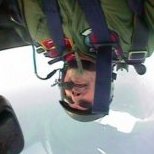


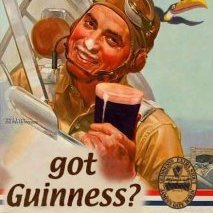
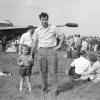
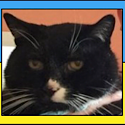
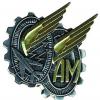

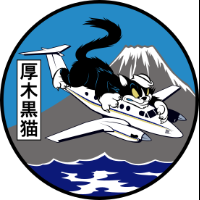
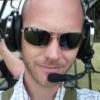
(510x640)-Copy(95x120).thumb.jpg.33073138e01aa81779639a845926753e.jpg)
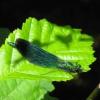
Wedge-TailedEaglePortraitRaptorDomains.thumb.jpg.41a306d3445a68f0f2df773e01776ea6.jpg)
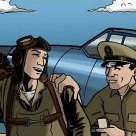

.thumb.jpg.6a89e05cd459361baad12b5efaa51407.jpg)
